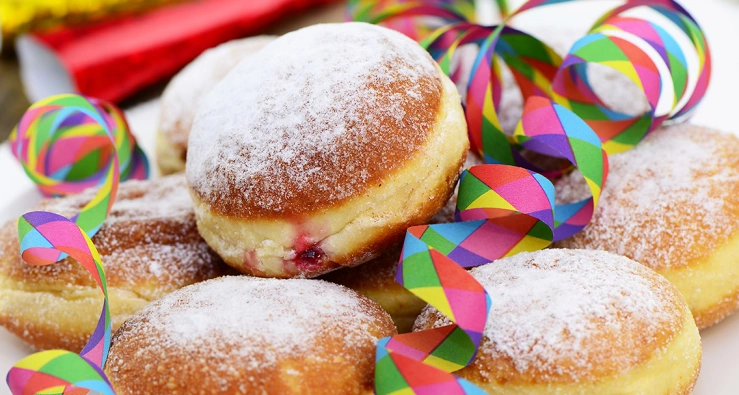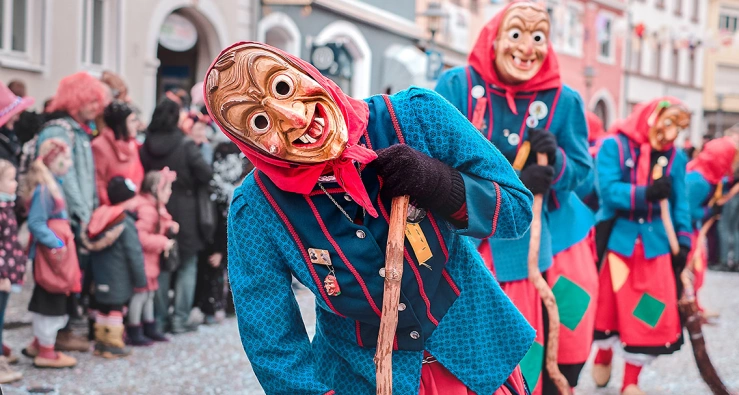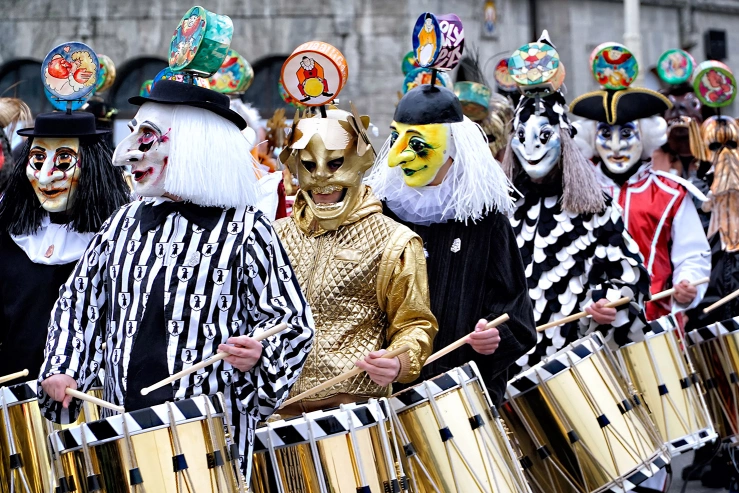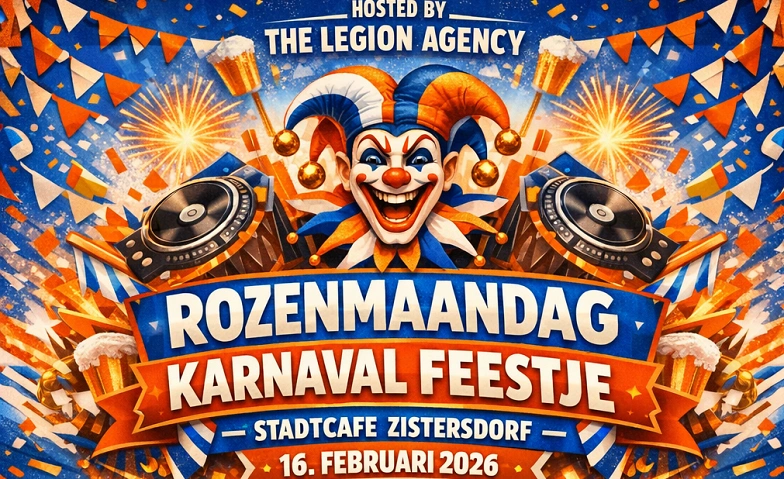Carnival with Eventfrog
Eventfrog is the perfect platform for organising events for the fifth season of the year, also known as carnival. From the carnival parade with calendar entry to the Weiberfasching party to the Schnitzelbank and the guild evening our tool offers digital support for all these events.
Organise parades, parties and balls in a relaxed and carefree manner
- Add the parade and other events in the calendar! So everyone knows when it starts
- Selling tickets for parties, balls and other events? No problem with Eventfrog!
- Including seating plan for fixed seats
- Unlimited categories for discounts for members, children and pensioners
- Increase beverage sales with your own vouchers
- Advertise events in regional media with just a few clicks
- Quick admission control for scanning tickets with the free Entry app


What is carnival?
Carnival always refers to the time before the official start of Lent, which is heralded by Ash Wednesday.
In ancient times, this time period was characterised by exuberant festivals during which food supplies were used up and plenty of alcohol was consumed before the strict fasting period of Lent began.
Even though Lent is a Christian custom before Easter, there is evidence that similar festivals were celebrated 5,000 years ago in Mesopotamia and the Roman Empire.
"Berliner", "Scheibenschlagen" and "Weiberfasching"
In some regions a particularly large number of carnival parades take place on "Rose Monday". It is therefore not surprising that the term does not come from the flower, but from the verb "to race".
The first Sunday of Lent after Ash Wednesday is traditionally the day of the bonfire in Southern Germany. This goes back to the pagan Germanic custom of chasing away the winter season.


Weiberfastnacht and Pfaffenfastnacht were originally the same festival, and the traditions date back to the Middle Ages. The first evidence of Weiberfaschnacht dates back to 1729, when the nuns in Cologne's St Mauritius convent danced in secular dresses rather than in their habit. Today's Weiberfastnacht marks the start of Cologne's street carnival.
Incidentally, this falls on Fat Thursday, when doughnuts and greasy sweet pastries are eaten. These baked goods are popular throughout the carnival season, which ends with Ash Wednesday and Lent. So carnival is not only a time of exuberant celebrations, but also a time of hearty indulgence.
Carnival worldwide
Carnival is celebrated in different ways in Europe and around the world. The best-known examples include the carnivals in Rio, Venice and Mardi Gras in New Orleans.
The carnival in Rio in its current form is the largest and most famous in the world. The main attraction here is the parade of samba schools that compete every year. The parade reaches its climax in the famous Sambódromo.
The historic carnival in Venice is also very popular. It is known for its splendid costumes and masks.
At Mardi Gras in New Orleans, colourful pearl necklaces are thrown from the floats instead of sweets.


Carnival of Basel
The Carnival of Basel (Basler Fasnacht) is the biggest carnival in Switzerland and has a special status. It begins on the Monday after Ash Wednesday with the morning parade and lasts exactly 72 hours – the so called "drey scheenschte Dääg" (the "three most beautiful days").
Besides the starting date, the Basel carnival differs from other parades in the strong separation of active participants in the cliques and the public. Costumes are also not welcome among the latter.
Guggenmusik, which is very popular in Switzerland and Southern Germany, is also part of the Basel carnival. This is a very rhythmic, quirky brass band music.





